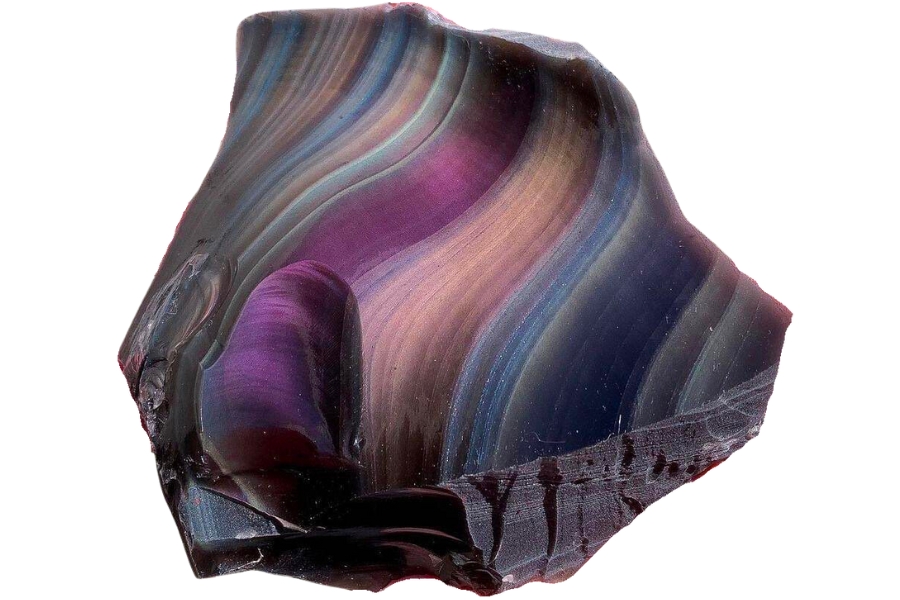Imagine a volcano erupting with hot lava, and then that lava cools down so fast that it turns into this shiny, smooth rock. That’s how obsidian is born!
If you’re wondering what obsidian looks like, it’s usually deep and dark, like a piece of the night sky. But that’s not all! There are different types of obsidian, and they each have unique colors, patterns, and properties.
In this article, we’ll explore the different types of obsidian and show you how different they are from one another despite being the same rock. Here, you’ll see and understand that each of these has its own story.
Ready to dive into the world of obsidian types? Let’s get movin’!
The 14 Different Types Of Obsidian And What They Look Like
As an amazing volcanic glass, obsidian comes in many different types. When you explore them, you’ll realize the incredible variety and value of obsidian, as they are used for everything from jewelry to ancient tools.
Black Obsidian
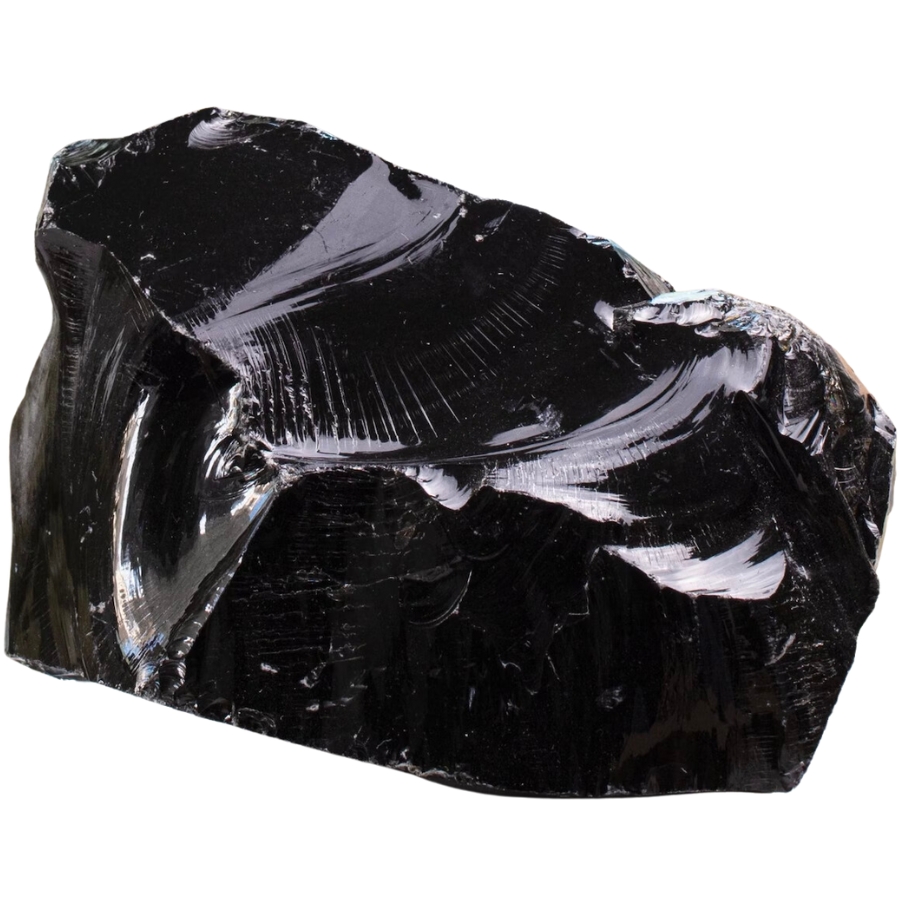
Black obsidian is, as its name suggests, usually deep black and super shiny, like a piece of the night sky. Holding one is like holding a piece of darkness that’s smooth and glassy to the touch.
It’s not only beautiful to look at with its sleek, dark surface, but it was also super useful in the past. Ancient people used it to make sharp tools and weapons. They figured out that when you break it, it can create edges sharper than a razor blade!
Today, black obsidian remains popular among those who enjoy collecting rocks and making jewelry. Its dark, mysterious look makes for some stunning pieces.
If you’re curious about other equally dazzling black rocks, minerals, and gems, you may visit our article on them.
Where you can find black obsidian
Wondering where to find obsidian? It usually hides in places that have had volcanic activity. Think about areas like the USA, Mexico, Iceland, and even parts of Italy and Scotland.
These places have had volcanoes that erupted long ago. When the lava from these volcanoes cooled down really quickly, it turned into black obsidian.
DON'T MISS OUT ON ANY GREAT FINDS!
While you're out searching you're going to find A LOT of other interesting rocks and minerals along the way. The last thing you want to do is toss out something really interesting or valuable. It can be easy to misidentify things without a little guidance.
You absolutely need a good reference guide in order to understand what you're looking at!
We've put together a fantastic field guide that makes identifying 140 of the most interesting and valuable rocks and minerals you will find REALLY EASY. It's simple to use, really durable, and will allow you to identify just about any rock and mineral you come across. Make sure you bring it along on your hunt!
Now, back to the identification specifics:
Snowflake Obsidian
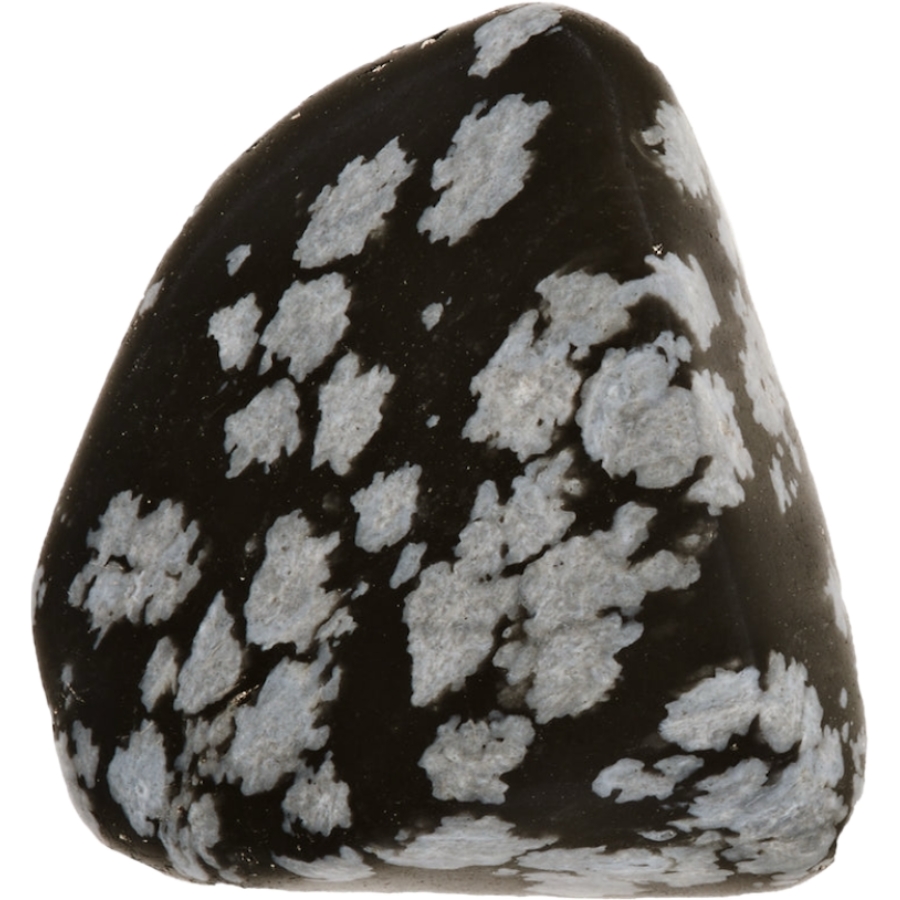
Snowflake obsidian is a sleek, dark piece of volcanic glass dotted with white or gray spots that look like snowflakes. These unique patterns aren’t actually snowflakes; they’re small clusters of the mineral cristobalite.
Its snowflake patterns give us clues about how quickly the lava cooled and what was going on around it at the time
In this day and age, it’s popular for making jewelry and decorative items. Its distinct look makes it a favorite for those who enjoy creating and wearing something that stands out.
Where you can find snowflake obsidian
This rock forms in areas that have seen volcanic activity. You can find it in many parts of the USA, especially where volcanoes were once active. For more specific information, check out our article on the best rockhounding locations.
It’s also found in other volcanic regions around the world, from Mexico to Iceland and even beyond.
Mahogany Obsidian
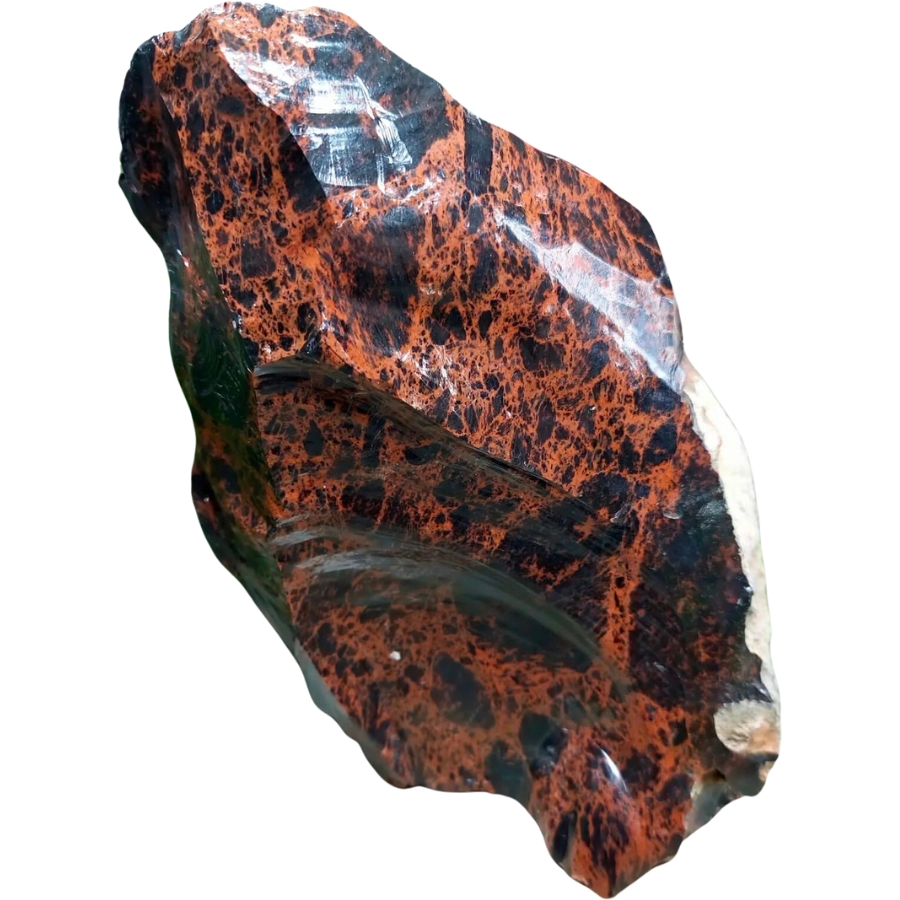
Mahogany obsidian is a dark, glossy rock with swirls of deep red and brown, almost like the wood of a mahogany tree. That’s actually where it gets its name. These beautiful colors come from iron impurities in the rock.
It forms just like other types of obsidian, but the presence of iron gives it those one-of-a-kind red and brown colors.
Long ago, mahogany obsidian was also used to make sharp tools and weapons.
Nowadays, it’s popular among those who love making and wearing unique jewelry. Its warm colors and intriguing patterns make it a standout choice for all sorts of creative projects.
Where you can find mahogany obsidian
You’ll find mahogany obsidian in areas with a past full of volcanic activity. The western USA is a hotspot, especially in places like Oregon and California.
But that’s not the only place. You can also find this beautiful rock in Mexico, Japan, and various spots with ancient volcanic history.
Rainbow Obsidian
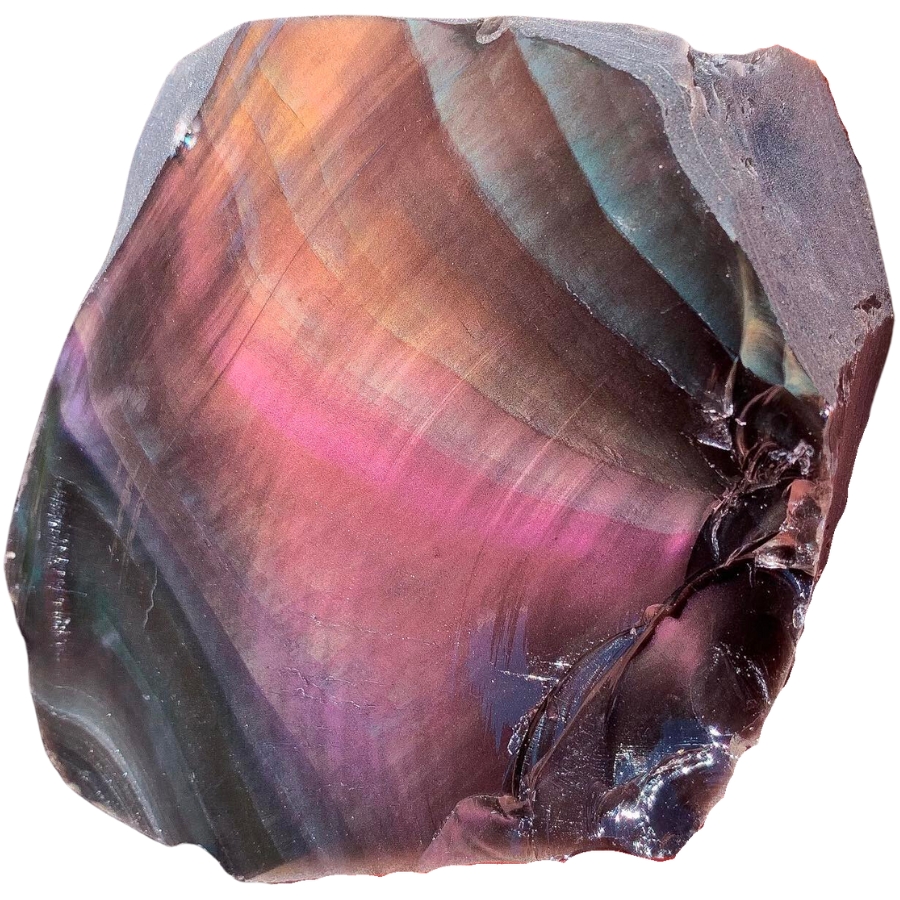
Rainbow obsidian is one of the most fascinating types of volcanic glass you’ll ever come across. It looks like it suddenly bursts into a spectrum of colors when the light hits it just right.
This amazing rock gets its rainbow effect from tiny layers of mineral inclusions, which scatter the light and create those beautiful colors. It’s like a natural version of those cool oil slicks you see in puddles, but way better because it’s a rock!
Its colors can include blues, greens, purples, and golds, all swirling together in amazing patterns.
Where you can find rainbow obsidian
Rainbow obsidian is typically found in areas that have seen volcanic activity. Mexico, especially in the state of Jalisco, is famous for its beautiful Rainbow Obsidian.
You can also find this colorful rock in the USA, particularly in California and Oregon, as well as various other volcanic regions around the world. For more in-depth information on finding gems near you, check out our guide.
Gold Sheen Obsidian
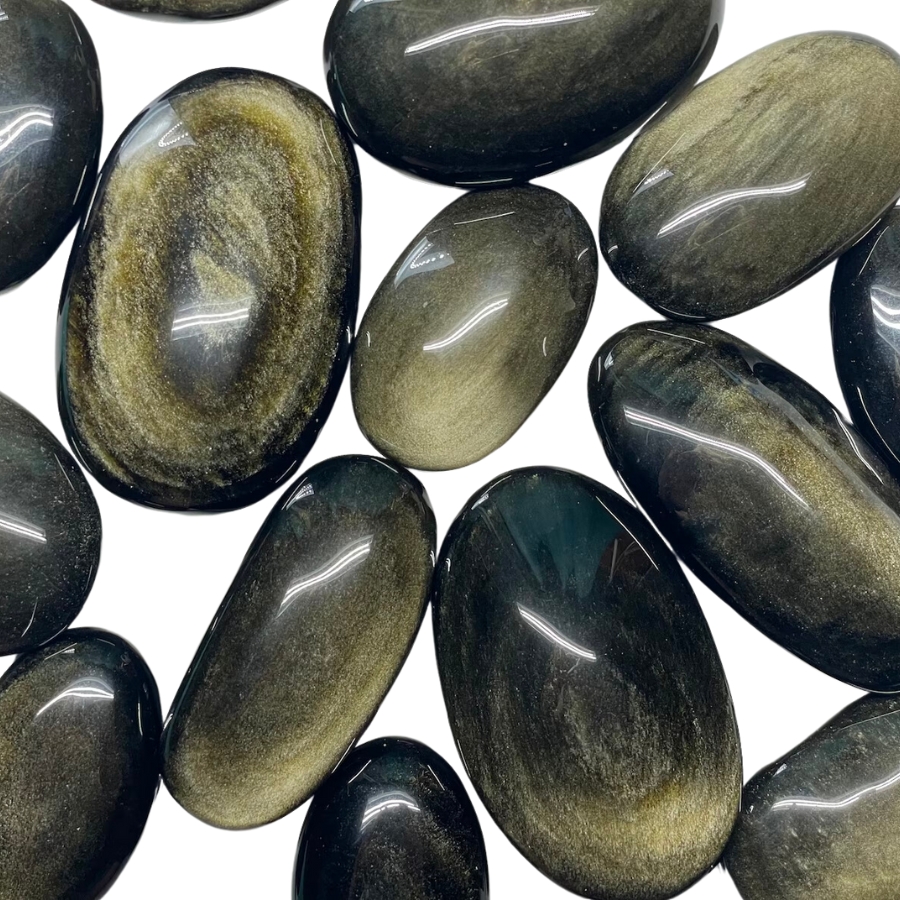
Gold sheen obsidian is a sleek, dark stone that suddenly flashes with a golden shine when you move it in the light. It’s like you’re holding a piece of the night sky that’s been sprinkled with stars.
It gets its sparkle from tiny bubbles of gas that were trapped in the lava as it cooled down super fast. These bubbles form layers that reflect light, creating that awesome golden sheen. Every piece has a distinct pattern, so no two are exactly the same.
It’s prized for its beauty. Folks love using it for jewelry and other crafts because it adds a touch of luxury and mystery.
Where you can find gold sheen obsidian
You’ll find gold sheen obsidian in places that have had volcanic eruptions. Mexico is known for some of the most beautiful specimens. But it’s also found in other parts of the world with a volcanic past, like the USA and Armenia.
If you want to find crystals near you, our guide may come in handy for you!
Silver Sheen Obsidian
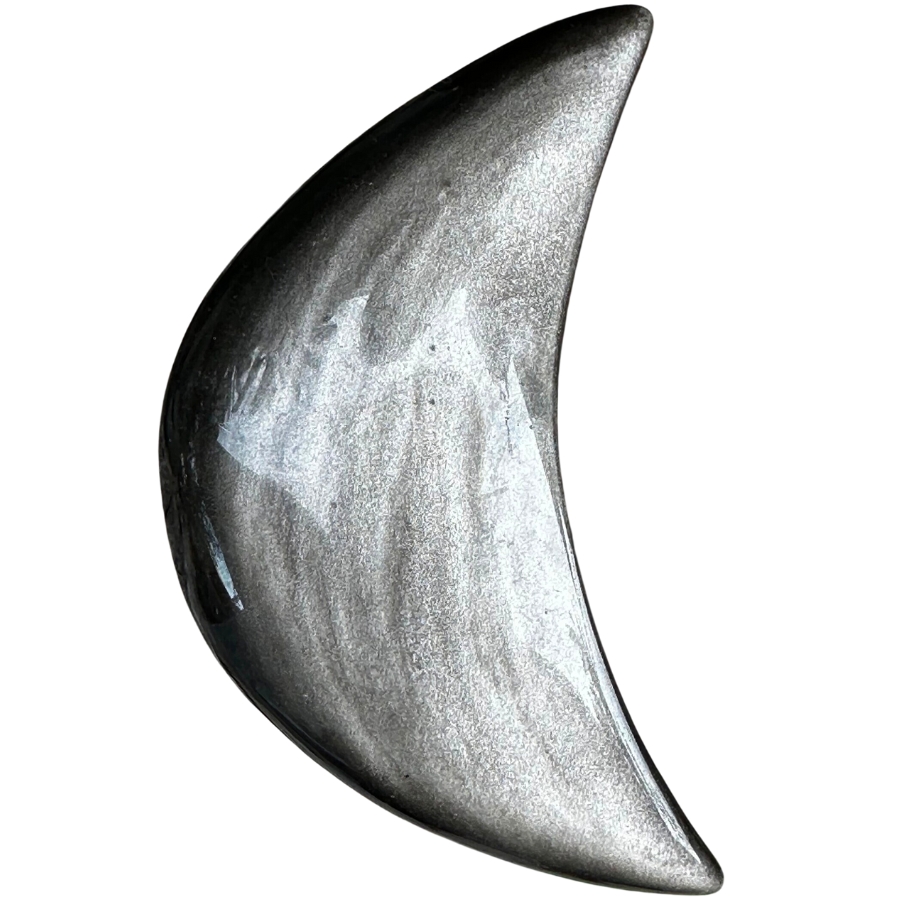
Silver sheen obsidian is a smooth, dark stone with a mysterious shimmer, like moonlight dancing on water. It’s got this amazing silvery glow that comes to life when you turn it in the light.
This shimmer is all thanks to tiny bubbles of gas that were trapped in the lava as it cooled super quickly. These bubbles are like little mirrors, reflecting light and giving the stone its silvery sheen. It’s like each piece has captured a bit of starlight!
It’s a popular choice for making jewelry and other decorative items. Wearing a piece of silver sheen obsidian is like carrying a little bit of nighttime sparkle with you.
Where you can find silver sheen obsidian
You’ll find silver sheen obsidian in places with a history of volcanic activity. Mexico is one of the best spots for finding beautiful pieces of this rock. You can also find it in the USA and Armenia, anywhere there were volcanoes long ago.
Apache Tears
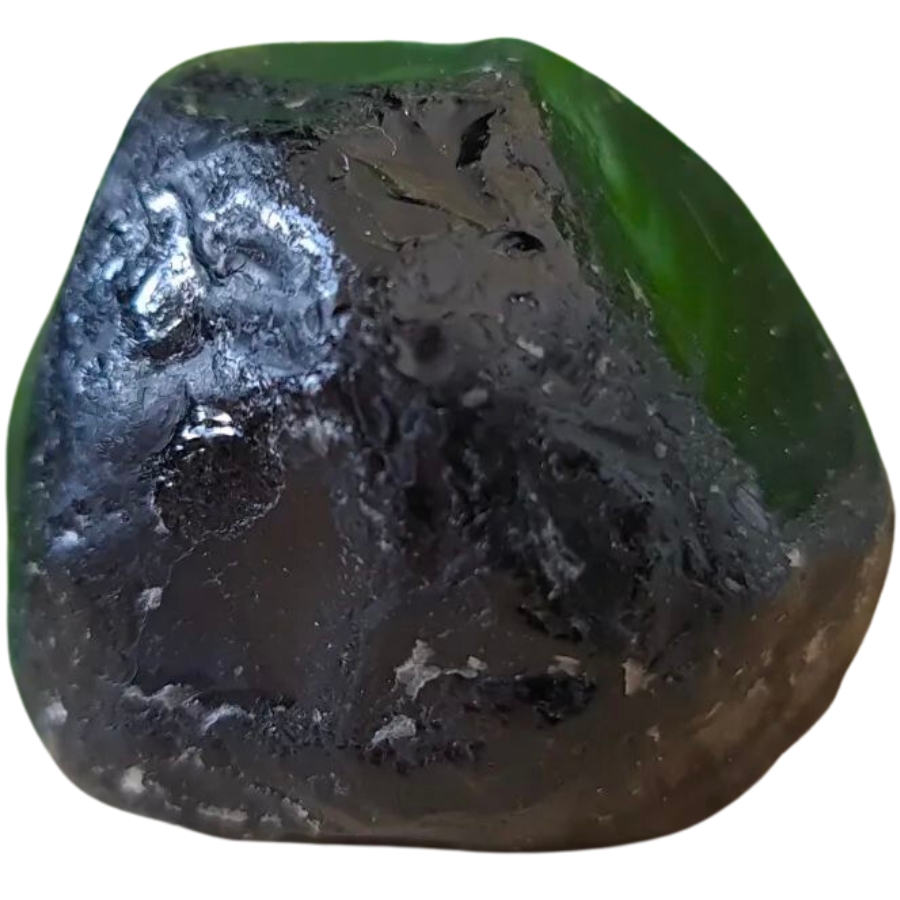
Apache tears are among the fascinating types of obsidian that are as interesting as their name. They’re small, smooth, and usually a bit round, looking like dark, shiny droplets.
But here’s the cool part: hold them up to the light, and they’re translucent, letting light pass through with a smoky glow.
These rocks get their name from a legend about the Apache tribe. It’s said that when the tribe was in despair, their tears turned into stones as they hit the ground. That’s why they’re called Apache tears.
Where you can find Apache tears
You’ll find Apache tears in areas that were once volcanic. The southwestern USA, especially Arizona, is famous for these little stones. They’re also found in other volcanic regions, like Nevada and New Mexico.
Fire Obsidian
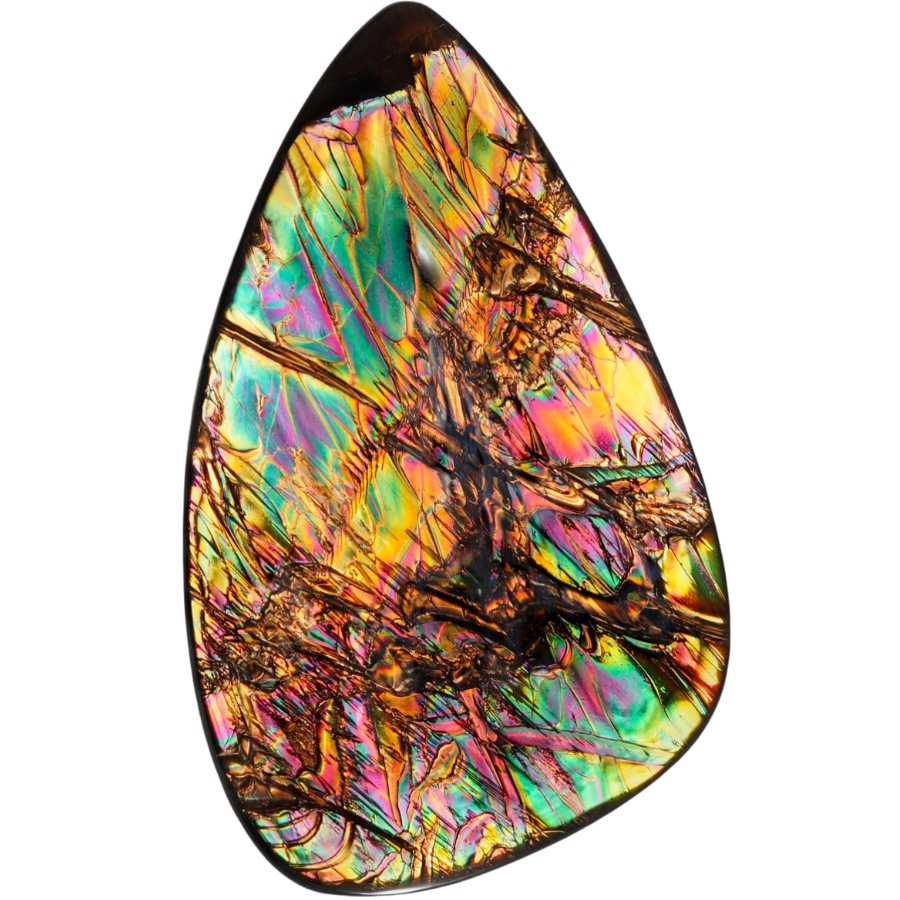
Fire obsidian is one of the most breathtaking obsidian types you’ll ever see. It’s like a piece of the night that suddenly bursts into flames with vibrant colors when the light hits it just right.
It’s got these incredible layers that shimmer with fiery colors like red, orange, green, and even purple.
This special rock gets its fiery appearance from super thin layers of magnetite or hematite between the layers of obsidian. These layers reflect the light in a way that creates those amazing colors.
Where you can find fire obsidian
Fire obsidian is quite rare and precious. It’s mostly found in places like Glass Buttes in Oregon. This area was once volcanic, which is perfect for forming obsidian.
Midnight Lace Obsidian
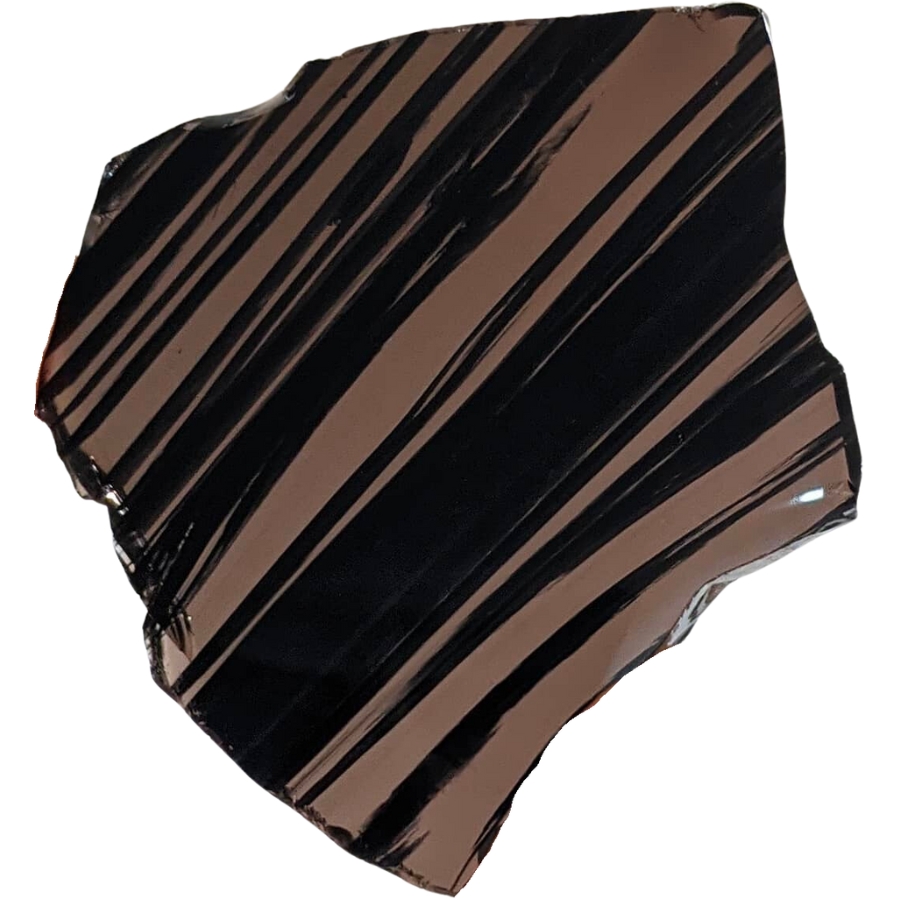
Midnight lace obsidian is a piece of the darkest night but woven with fine, delicate threads of silver or grey.
These intricate patterns aren’t just pretty; they’re like nature’s own artwork, created deep within the ground.
This amazing rock forms just like other obsidian, but with midnight lace obsidian, there’s a twist. As it cools, tiny crystals and bubbles form inside it, creating those lace-like patterns.
Midnight lace obsidian has always been treasured for its beauty. It’s a popular choice for making pretty, one-of-a-kind jewelry. It’s also a favorite among rock collectors who love its intricate patterns and mysterious look.
Where you can find midnight lace obsidian
One of the best spots to find midnight lace obsidian is in Armenia, a country with a rich volcanic history. But it’s also been discovered in other parts of the world, like Turkey and the USA.
Green Obsidian
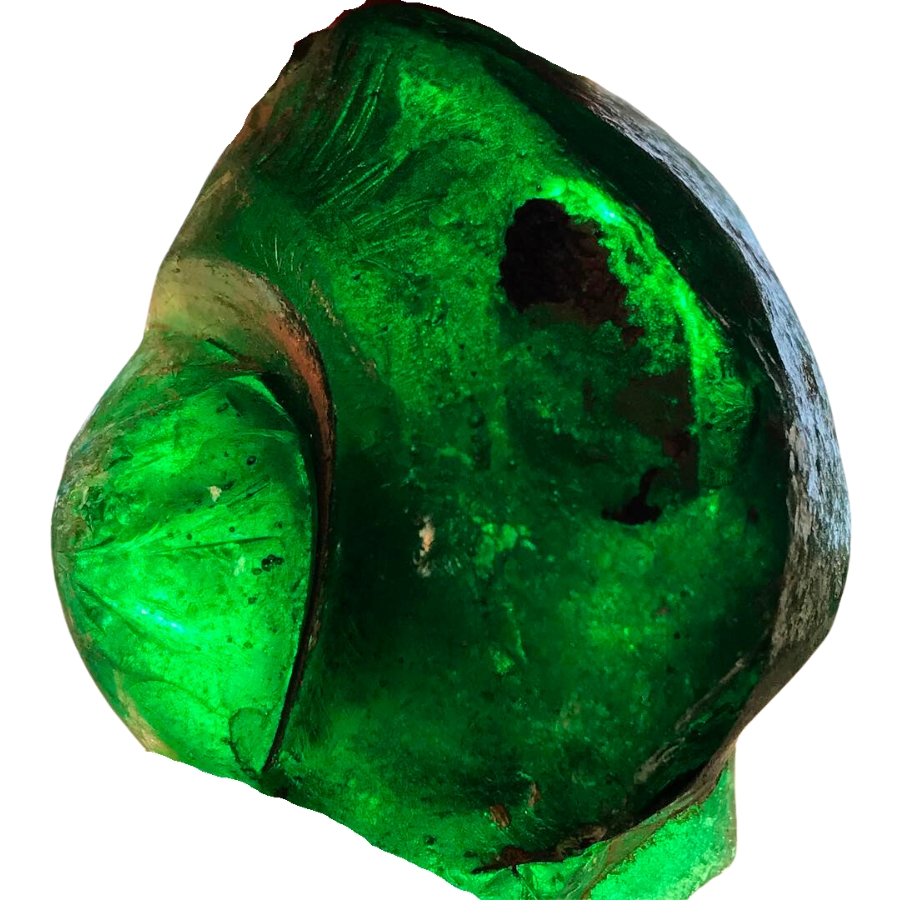
Green obsidian is a stone with the glossy, glassy surface of obsidian, but in a cool, soothing green color. It’s like a deep, green forest that’s been turned into glass.
This rock forms just like other obsidian, from lava that cools down super fast. But with green obsidian, there’s something extra. Tiny bits of minerals like chromium or copper get mixed in while it’s forming.
These minerals give it that beautiful green color, making each piece a little bit of natural art.
Green obsidian is often used in jewelry because its color and shine make for some really stunning pieces. It’s also popular with rock collectors who love finding unusual and beautiful stones.
Where you can find green obsidian
Green obsidian is pretty rare, but you can find it in areas that have had volcanic activity. Mexico is one of the places known for its green obsidian.
It’s also been found in other parts of the world, like the USA and Greece. These places once had the perfect mix of volcanic activity and minerals to create this amazing stone.
Obsidian Needles
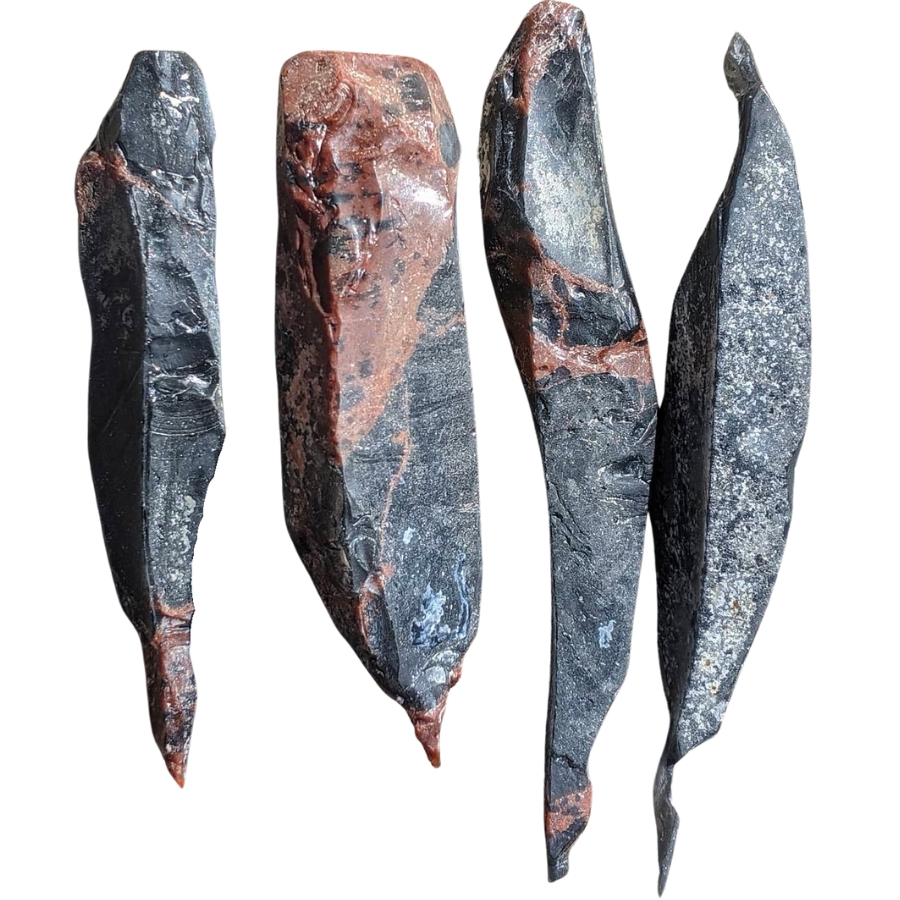
Picture this: thin, sharp, and long pieces of volcanic glass that look like black needles. They’re not something you’d want to sew with, but they sure are interesting to look at and learn about— that’s what an obsidian needle is.
These needles form in a pretty cool way. When lava cools down fast, it usually makes obsidian. But sometimes, the lava cools down even faster than usual, stretching out into these long, thin shapes. That’s how we get obsidian needles.
People are really interested in obsidian needles because they’re so different from other types of obsidian. They’re not usually used for making things like jewelry because of their shape and sharpness. But they’re fascinating to study and collect.
Where you can find obsidian needles
One of the best spots to find obsidian needles is the Inyo National Forest in California, USA. But that’s not the only place. They’re also found in other volcanic areas around the world.
Spiderweb Obsidian
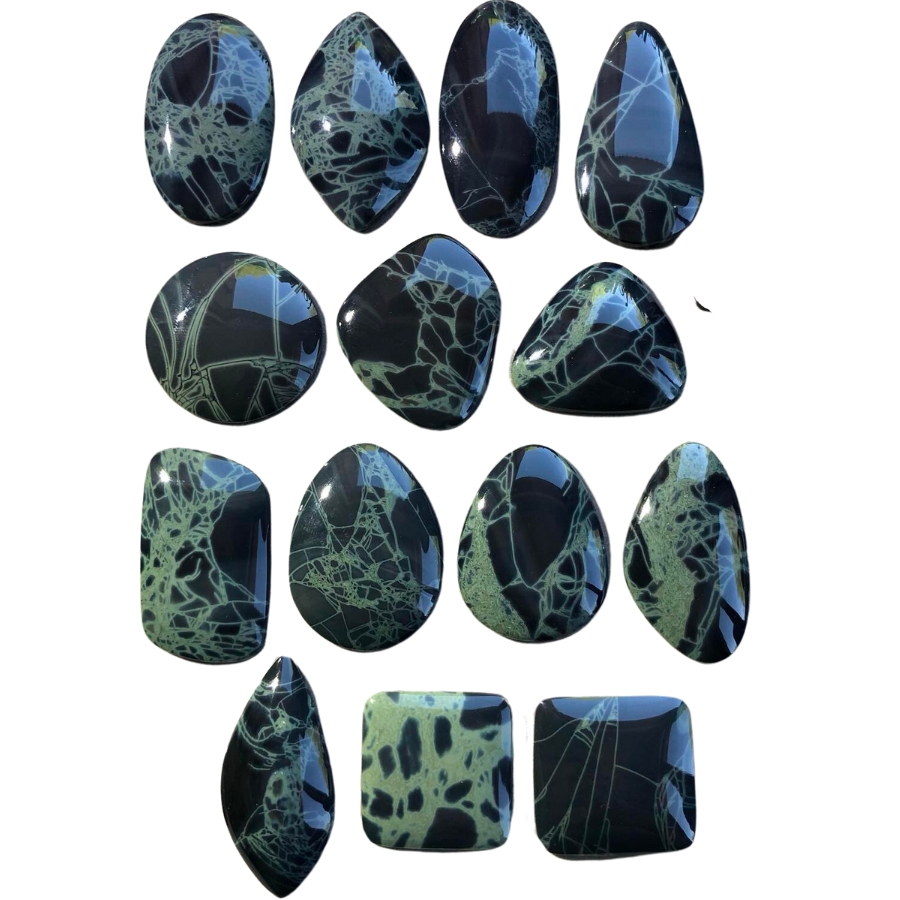
Spiderweb obsidian is a stone that’s mostly dark like the night but with thin, delicate lines running through it just like a spider’s web.
These lines are usually white or gray, and they create amazing patterns that look just like webs.
These web-like patterns are formed by small cracks in the obsidian. Over time, minerals seep into these cracks and harden, creating the lines we see. It’s a slow and natural process, kind of like how an actual spider weaves its web.
Where you can find spiderweb obsidian
Spiderweb obsidian is found in areas that have had volcanic activity, and one of these places is in the western USA, like in Oregon and Idaho.
Velvet or Peacock Obsidian
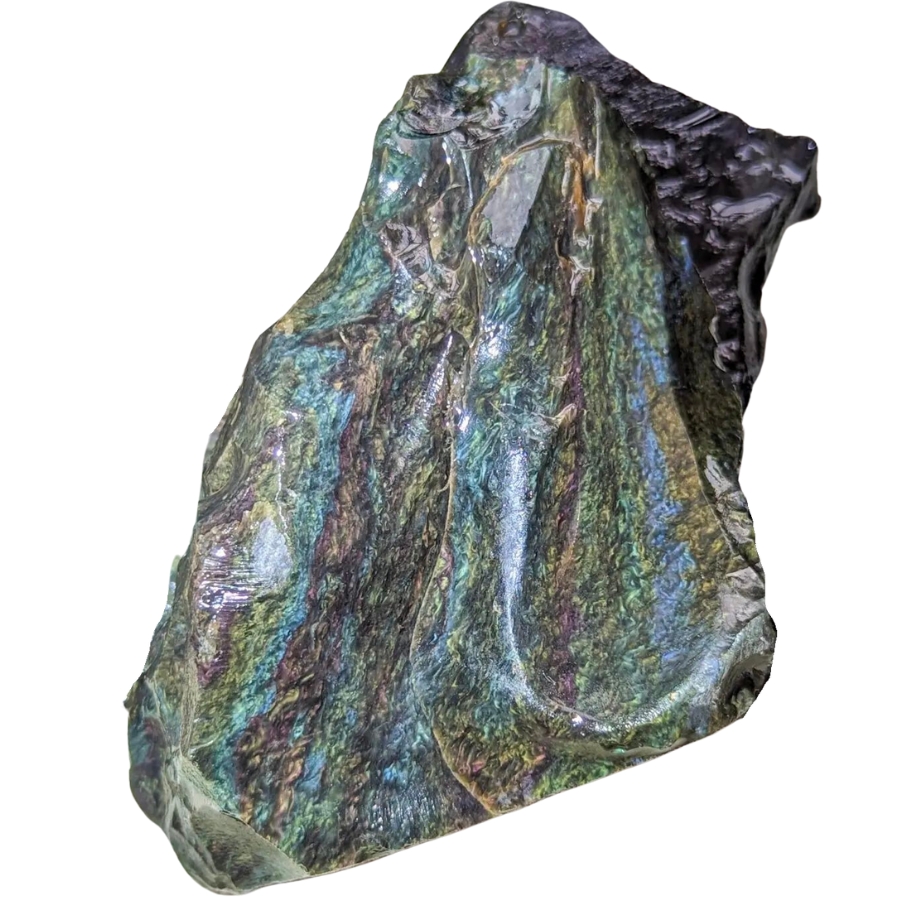
Velvet obsidian, also known as peacock obsidian, is as beautiful and colorful as the bird it’s named after. Imagine a dark, glossy stone that flashes with bright, iridescent colors like blue, green, and gold, just like a peacock’s feathers.
It’s not every day you find a rock that looks like it’s been painted with all the colors of a rainbow.
This amazing rock gets its colorful sheen from tiny layers or inclusions inside the obsidian. These layers catch the light and reflect it back in all those dazzling colors.
Velvet or peacock obsidian is often used in jewelry and other crafts because its bright colors make for some really striking pieces.
Where you can find peacock obsidian
With its rich history of volcanoes, Mexico is one of the places known for velvet or peacock obsidian. It’s also been found in other volcanic regions around the world, like the USA and Indonesia.

